Anglers Booking Team
The expert copywriters at Anglers Booking have meticulously crafted this article. Our dedicated team of writers provides valuable insights and information to enhance your angling experience.
 12 minutes read
12 minutes readIf you're passionate about scuba diving, swimming, fishing, long white sand beaches, sea turtles, and all the fun that comes from the ocean and the sun, it's the right time to get lost in Perdido Key.
Not literally, of course. Although loosely translated from Spanish, Perdido Key means "lost key." Despite its intriguing moniker, this place is lost only in the beauty and abundance it offers.

The 26 miles of unspoiled coastline in Perdido Key are a haven for anglers, each spot offering a unique fishing experience. Every location has charm, from the tranquil marshes to the bustling river channels, making Perdido Key a true fishing dreamland.
Keep reading if you're eager to explore Perdido Key's fishing scene! We'll explore the most famous fish species, the best fishing spots, and popular techniques! We promise it will be a smooth read. So, let's dive in!
Perdido Key's waters are teeming with a diverse array of fish species, promising a fishing experience like no other. Whether you're well-versed in the fish species of the Florida coast or not, you're sure to find a catch in Perdido Key. Some are native, others migratory, but the truth is, there's an abundance of them. Even if you're not particularly keen on fishing, the fishing luck here is hard to resist!
Although they are home to many species year-round, the clear dominant hosts are Speckled Trout and Redfish. There are many of them, in all sizes, even in trefoils. Let's meet them.

The waters of Perdido Key are dominated by Speckled Trout, a species known to prefer cleaner waters. In addition to its enigmatic nature, it is also a frequent target for its delicious meat. It mainly swims in shallow coastal waters, grassy areas, oyster beds, and tidal streams. It varies in size from 12 to 25 inches, with larger specimens occasionally reaching 30 inches in length.
The prime fishing season for Speckled Trout in Perdido Key is from March through May and is best fished with live bait such as shrimp, mullet, and minnows, as well as artificial lures such as soft plastics, spoons, and plugs of water. They are caught using techniques along grass lines, drifting with the current, and working lures near the structure.

Along with Speckled Trout, Redfish are among the most dominant species in Perdido Key, offering an exciting challenge for anglers. They thrive in shallow coastal waters, marshes, flats, and around structures like docks and piers. Their adaptability to both saltwater and brackish environments makes them a rewarding target. In the right conditions, they can grow over 40 inches and weigh more than 30 pounds.
Redfish are easy to spot, and in addition to their red color and white belly, they also have a black spot near the base of the tail, which gives them the colloquial name "Red Drum." Prime season in Perdido Key typically runs year-round. The most commonly used baits for Redfish are shrimp, mullet, or pinfish, including soft plastics, spoons, and water plugs.

Another species of striking color and appearance found in Perdido Key waters, the Red Snapper is loved as much for the quality fights it gives its opponents as it is for its delicious meat. You will find this type in deeper sea waters, where they inhabit reefs and submerged structures. It grows 20 to 30 inches and weighs 20 pounds.
The primary hunting season for these species is during the summer months when these fish migrate closer to the coast for spawning. Bottom fishing is the primary technique, using squid, mullets, cigar bait, and artificial baits such as lures and cut bait.
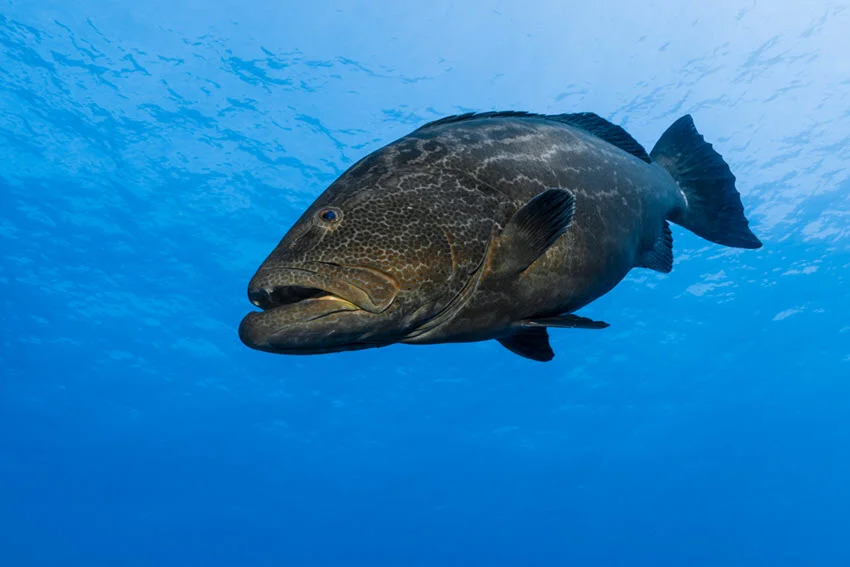
In the depths off the coast of Perdido Key, you can also fish for mighty Groupers, fearsome fish known for their strength and size. A bit slow and sluggish, at least at first glance, they often inhabit a variety of habitats, including reefs, ledges, and generally favor structures where prey lurks or hides. You can find Red or Goliath Grouper in these waters, and they all have a vast range of sizes, from three feet to over 50 pounds.
Prime Grouper fishing season in Perdido Key is from June to December, although they can be targeted year-round. Anglers generally catch them on pinfish, grunts, squid, and artificial baits such as lures and swimbaits. Bottom fishing or trolling are the most common and fixed techniques for successfully landing Groupers in your fishing basket.
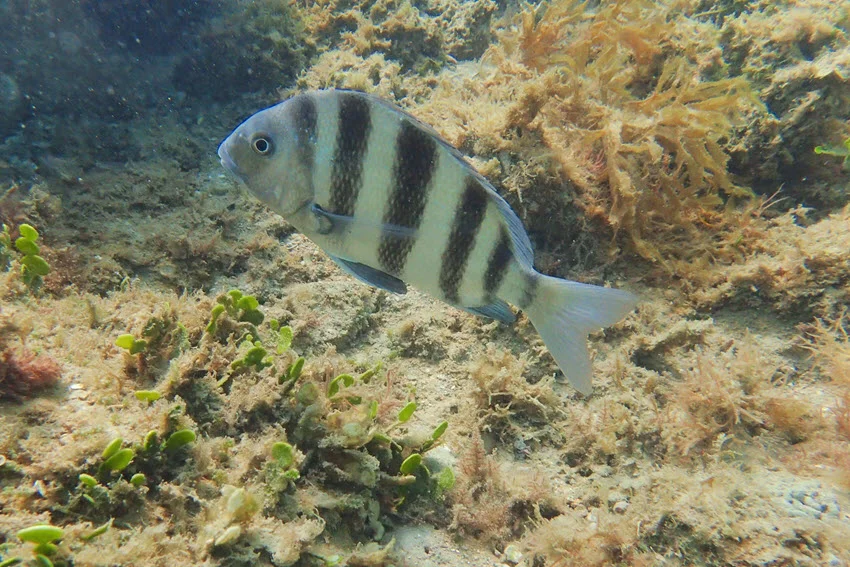
A species with a less-than-flattering name, Sheepshead still draws plenty of anglers thanks to its intense fight and tasty meat. These fish favor docks, pilings, and rocky ledges, feeding on crustaceans, mollusks, and small fish. With sharp senses and a knack for stealing bait, they're notoriously tricky. To outsmart them, use lively presentations with freshly caught crabs or squid.
Their distinct appearance is characterized by broad, flat bodies decorated with prominent vertical stripes and powerful jaws. Perdido Key's prime Sheepshead fishing season occurs during the cooler months, although these fish can be targeted year-round.
Although you will not lack fishing adventures even if you fish only native species, if you want to feel a taste of deep ocean salt and a real raw encounter with aquatic species, then read below which species migrate during the year in Perdido Key waters.

Bluefish are fearsome predators famous for their aggressive behavior. They are also party breakers that make the party even more exciting. Bluefish are voracious species that gather and search for prey around reefs, piers, and drop-offs. They vary in size, ranging from 1 to 10 pounds, although larger specimens exceeding 20 pounds are not uncommon.
Their season is late spring to early fall, when they are most abundant in coastal waters. Anglers fish by casting and trolling with metal spoons, plugs, and soft plastics. Given their aggressive nature, trolling must be erratic and frantic. With its wild behavior, Bluefish also awakens the wildness in anglers, ultimately resulting in an adrenaline clash.

Another robust fish, the Jack Crevalle, is traditionally known for its aggressiveness and great appetite. They inhabit bays, estuaries, and coastal waters and generally grow up to 40 or 50 pounds in size. Jacks have a muscular body, with a sloping forehead and a deeply forked tail, which allows them to accelerate quickly and unleash powerful bursts of speed.
The prime season to hunt in Perdido Key is during the summer. Due to their hunger, they are primarily caught on live bait such as mullet, pinfish, and shrimp, as well as artificial bait such as plugs, spoons, and lures. Targeting these voracious predators often involves casting or trolling along the inshore structures where Jack Crevalle congregates.
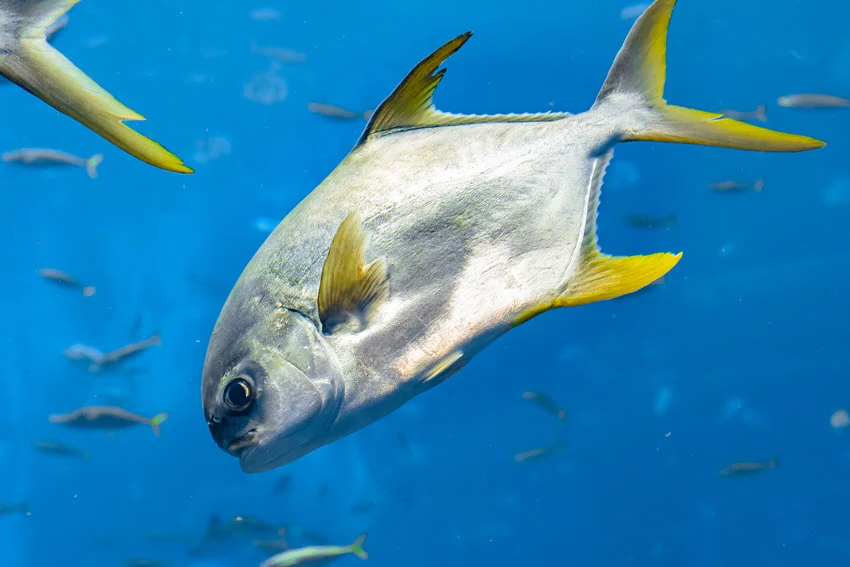
Pompano is a smooth fighter with delicious meat. Its body is covered in silver, and it is a very agile species that runs perfectly through the rough sea, almost like surfing. Its habitats are deeper waters near the bottom. Compared to other species, it is not an excessively large fish. The Pompano has everything else: aggressiveness, which in the fishing dictionary means excitement and fun.
The primary season for Pompano fishing in Perdido Key is summer and fall. The easiest way to lure it is with baits such as sand fleas, shrimp, and small crabs, or artificial baits such as lures and soft plastics. Surf fishing is a popular tactic for catching this species, as is casting in beds and sandbars.
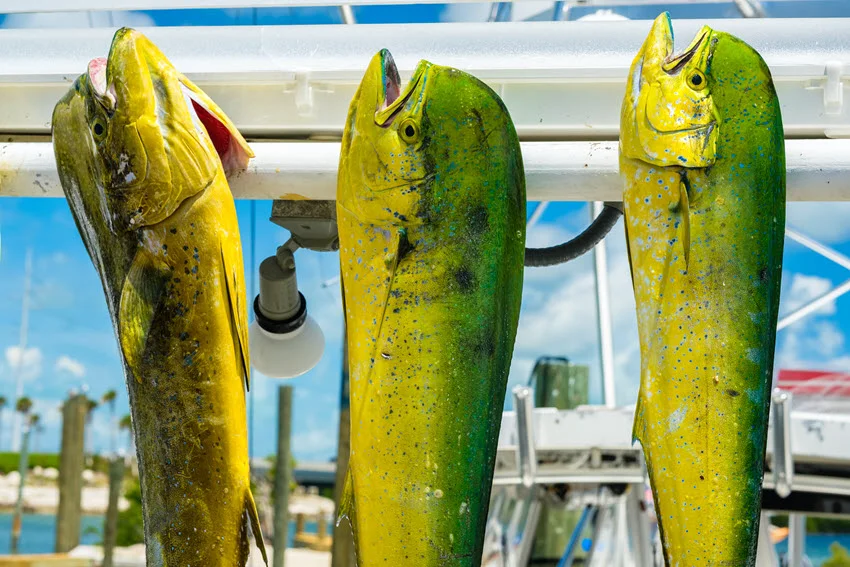
Mahi Mahi is a bright and unusual variety of dolphin known for its unusual greenish and robust body. But also by incredible acrobatic jumps and lightning runs. If you're lucky, you'll come across samples exceeding 50 pounds. If you hunt them in Perdido Key, it's to do that work during the warmer months, from late spring to early fall.
Trolling is the first choice for Mahi Mahi, with brightly colored lures and live bait such as ballyhoo or squid available. They are also often caught drifting with rigged or artificial baits. Offshore structures, weed lines, and floating debris are prime locations to encounter Mahi Mahi, and an encounter with these colorful dolphins leaves no one indifferent.

In the deep offshore waters of Perdido Key, anglers pursue the mighty and fast Wahoo, a true swim fishing speedster. It also has a formidable warrior personality. Recognizable by their blue-green color, they command great respect among sea anglers. You will find them around reefs, oil rigs, and rock structures.
They range in size from 20 to 70 pounds, and specimens exceeding 100 pounds are common. Wahoo fishing spans the season from late spring to early fall. Like most aquatic species, they are primarily caught by trolling at high speed and drifting with live bait such as bonito or ballyhoo. Wahoo is looking for more experienced anglers, but even if you watch others fish, you will feel the passion and learn a lot.
After introducing you to the most popular fish and explaining the best time to fish here, it's time to deal with the best locations. Here are our top five.

Perdido Pass is a waterway entrance to Perdido Key, or more precisely, a floating pit in Orange Beach, Alabama. Located approximately 8 miles west of Perdido Key, it can be reached by boat or from nearby shore access points. Perdido Pass is also a passage of very productive waters, where species such as Redfish, Speckled Trout, Flounder, and Sheepshead can be caught. Strong currents also attract larger predators such as Snapper, Grouper, and King Mackerel.
Since the Pass is very close to the Gulf of Mexico, it is easy to go fishing for species such as Tuna or Marlin. What rounds off the whole blanket of fishing here is a genuinely unreal landscape of emerald green and clear sea! You simply have to experience it.

Perdido Key State Park is great for a quick day fishing trip. Located directly on Perdido Key, it is easily accessible, with prime fishing spots along the shore and near its piers. Beautiful beaches invite surfing and surf fishing; here, you can fish for Pompano, Flounder, Spanish Mackerel, and much more.
The park is beautiful, and there is enough space to do whatever you want: fly fishing, casting, kayak fishing, you name it. If you are a fan of scuba diving, you can do it here. In addition, there are vantage points to absorb better the incredible view that opens before you.
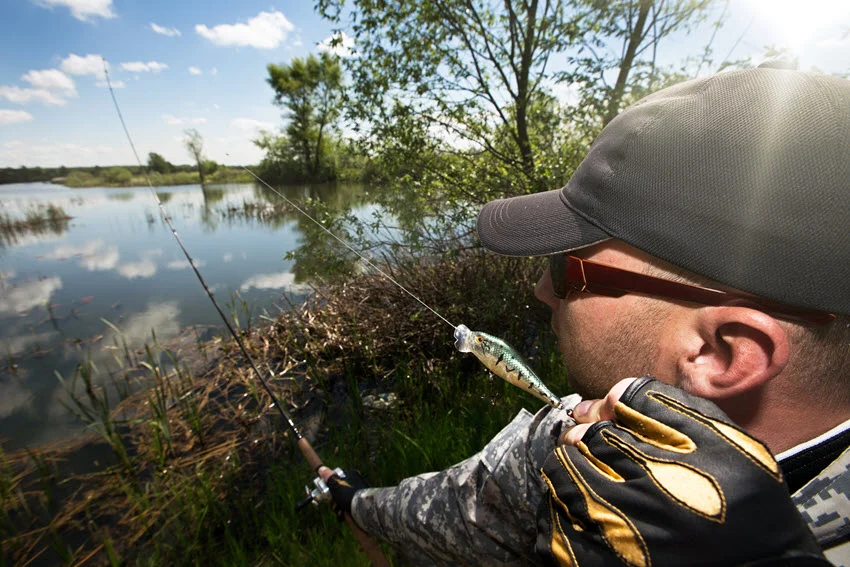
The Old River flows between Perdido Key and Ono Island and is a vital waterway connecting Perdido Bay to the Gulf of Mexico. Due to abundant shallow plains, it is also a meeting point for many fish, particularly Redfish, Speckled Trout, Flounder, and Sheepshead.
It is desirable for kayak anglers who enjoy exploring the calm waters of the Old River backwaters. There is also a lot of greenery and vegetation, which will be especially useful for those who do not like the ocean's summer heat.
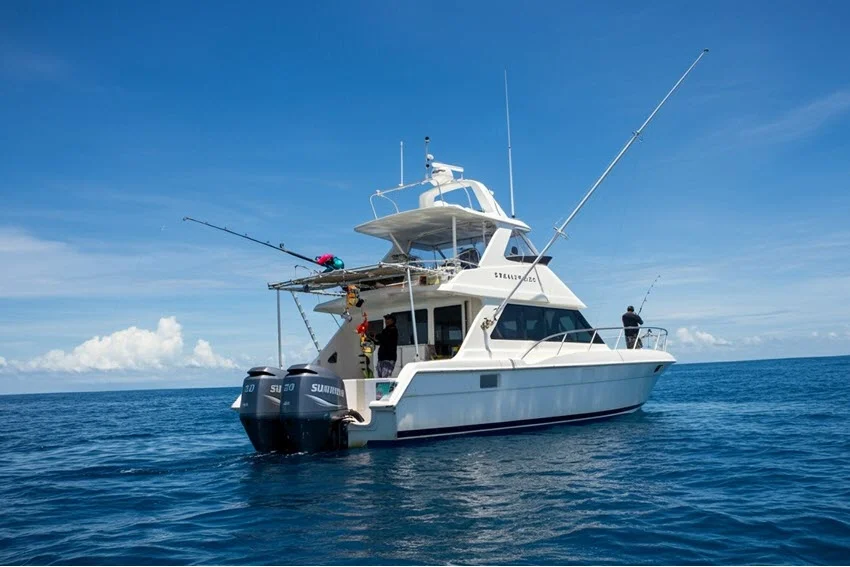
Considering the Gulf of Mexico waters are very close, it would be a shame to miss them. Stretching beyond the horizon, these coastal waters are home to many species of wildlife, such as Mahi Mahi, Wahoo, Tuna, Sailfish and Marlin. Who knew if you like trolling or drifting? Head to this slightly further road?
Many reefs, oil rigs, and underwater structures attract a wealth of marine life. It is essential that you are well equipped and that, if you are already going with your boat, you know how to navigate in the not-so-easy waters of the Gulf of Mexico. This trip will be one of those eye-opening experiences regarding location, the rawness, and the wilderness of ocean life.
Perdido Key inspires both desire, adventure, and exploration with equal ease. So it is with the popular fishing techniques. Some combine both approaches, and some are more adrenaline. Let's learn more about some of them.
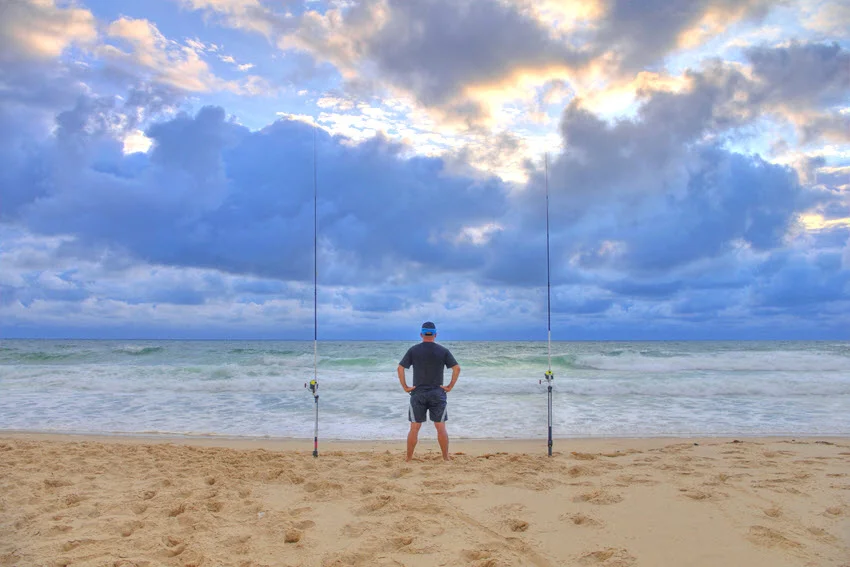
You have to admit that surf fishing somehow fits perfectly with the beautiful landscape of Perdido Key. This technique requires special equipment adapted to the dynamic conditions of the surf zone, namely a solid surf rod, a reel with a smooth drag system, and accessories that match the target species.
Using a pyramid sinker or other weight to attach the lure to a bait, such as sand fleas, shrimp, or cut bait, has proven to be an efficient approach, as it suits the habits of most target species. These are mainly Pompano, Flounder, Spanish Mackerel, and Whiting. It is essential to pay attention to factors such as the movement of the tide, the clarity of the water, and, generally, the weather conditions, which can disturb the behavior of the fish.
In addition to the excitement of hunting, this technique is fun in that we can easily connect with the mighty ocean and, at least for a moment, understand the rhythm of the life of the target fish.

Kayak fishing is a technique that combines curiosity with exploration. With a high-quality kayak and gear, you can explore the diverse marine habitats of Perdido Key and the Gulf Coast. With calm bays, picturesque estuaries, and spacious flats, the kayak allows smooth sailing for anglers who like this approach.
One of the primary advantages of kayak fishing is the possibility of exploring remote and shallow areas, thus getting closer and making it easier to catch Redfish, Speckled Trout, Flounder, Sheephead, and much more.
Depending on the target species, kayak fishing is mainly used with light equipment and artificial bait. Going to the open sea and targeting pelagic species will require more powerful equipment and a more robust kayak.
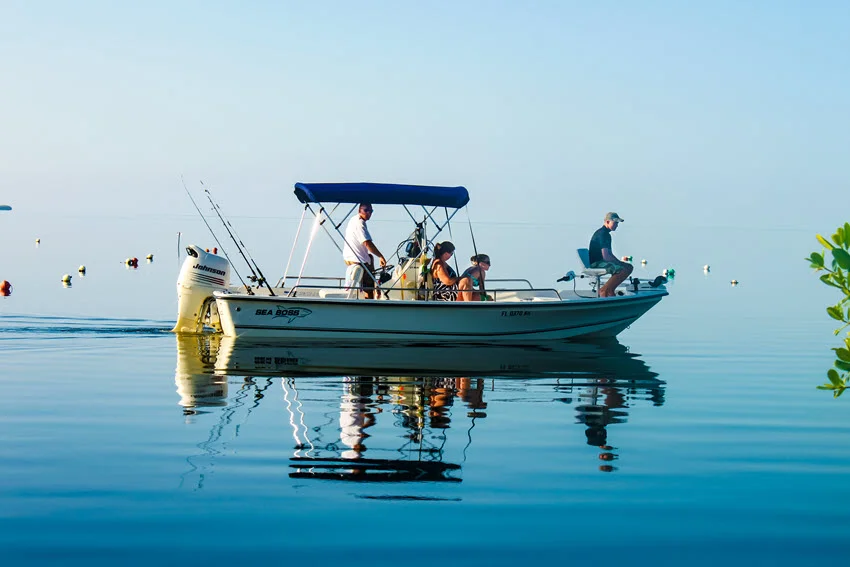
Drifting is a traditional technique that today relies on modern technology in many respects. However, it all depends on how seriously you take it and what you want to achieve by fishing. It is also available from coastal areas and offshore for pelagic fish pursuit.
This technique is popular and effective because it lets anglers cover wide areas and target multiple species at once. By using wind and current to move bait naturally, it pairs well with both live or artificial lures, and can even be combined with trolling gear for added reach.
Paying attention to the wind and recognizing subtle signs of fish presence is essential. Thanks to modern technology, drifting is much easier today, but you don't have to stick to it or deny yourself the enjoyment of drifting if you don't have all the top-notch equipment.
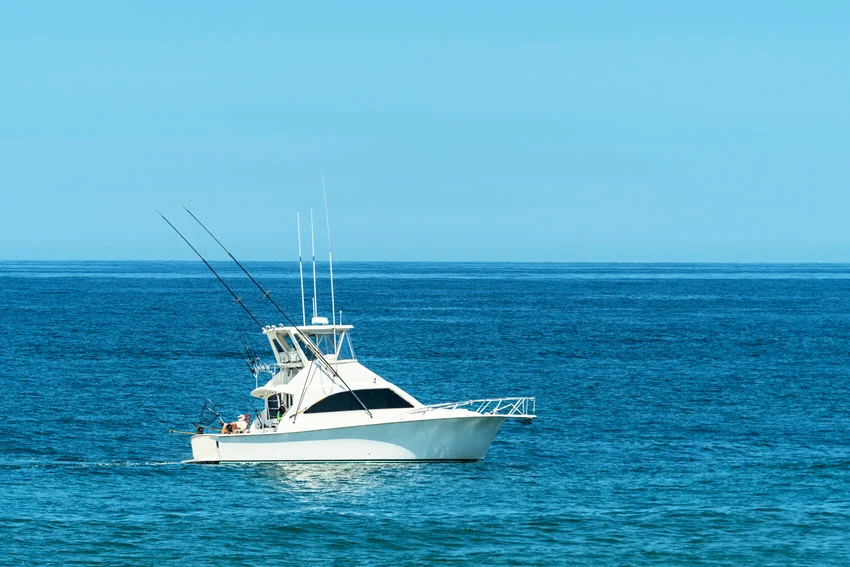
Trolling is a functional technique to adapt to your fishing style and favorite habitats. Although primarily intended for offshore fishing for Tuna, Kingfish, or Marlin, you can also troll from coastal areas.
For this fishing technique, you will need specialized trolling rods and reels equipped with sinkers, planers, or holders. While the rods are firmly hooked to the boat, the bait will present itself at different depth levels.
The essence and what ultimately depends on the success of trolling is the skillful presentation of the bait and matching the boat's speed with the rod's handling. Of course, no two approaches are the same, meaning everything must be tailored to the target fish species.

Globally, fly fishing is undoubtedly one of the most popular methods. The secret is probably in functionality and simplicity. You can fly fish on rivers, lakes, oceans, from boats or shores, almost anywhere you can think of.
However, fly fishing is unlike traditional fishing, which relies on the weight of the lure and the weight of the line to cast a light fly. These are lightweight rods specialized for fly fishing, with reels and lines precisely designed for casting light flies.
In Perdido Key, inshore anglers can target species such as Redfish, Speckled Trout, Flounder, and offshore pelagic species such as Mahi Mahi, King Mackerel, or Sailfish. Fly fishing is not for those who are more into adult adrenaline fights, although there is that in fly fishing, just presented through a more subtle approach, full of patience, finesse, and movement control.
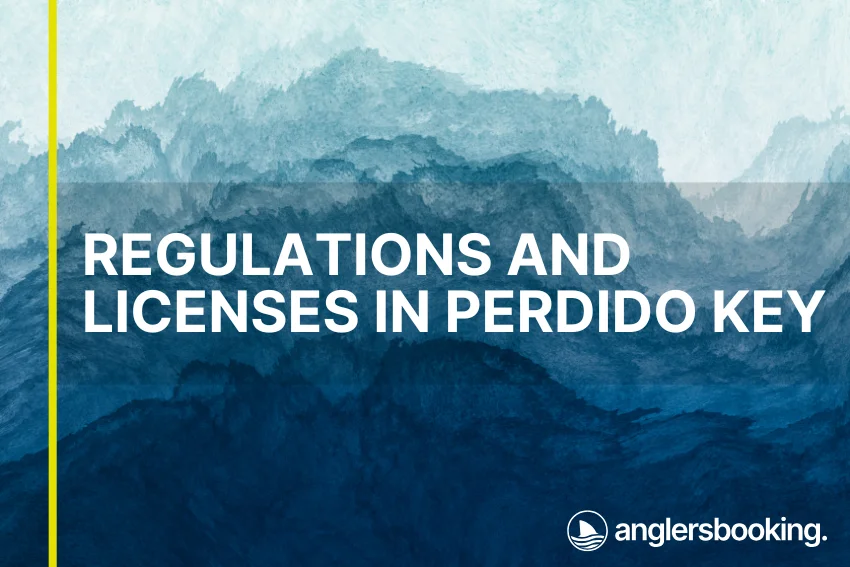
Understanding fishing regulations in an area is crucial for protecting fish populations and ecosystems and promoting responsible angling practices.
Anglers Booking Team
As in all of Florida, state and federal authorities, including the Florida Fish and Wildlife Conservation Commission (FWC), regulate fishing regulations and licenses in Perdido Key. They are responsible for the sustainable management of fish populations. This also means that if you want to fish Perdido Key in a relaxed, legal, and environmentally conscious manner, you must follow all applicable regulations.
Also, in Florida waters, all anglers 16 years and older must possess a valid license, which can be easily obtained through the Commission's official website or from authorized agents. Note that specific regulations, such as size and gear limits, may apply to certain species or fishing locations. The website provides detailed information.
By respecting the regulations and having permits, you contribute immeasurably to the health of such a fragile ecosystem, but you also ensure a more comfortable stay and a happier hunt.
All good things end, but that saying could be reformulated and adapted here. We've come to the end of our guide, but for you, the actual Perdido Key travel and fishing are just getting started. At least, we hope they will, and we hope you will regularly consult this guide to inspire and support you!
In the meantime, to keep the good energy going, please write to us in the comments below about your thoughts and feelings on Perdido Key, whether you've been there, and how it was for you. Anything that will contribute to exchanging good information, tricks, and, most importantly, good vibes and fishing luck! Happy Fishing!

The expert copywriters at Anglers Booking have meticulously crafted this article. Our dedicated team of writers provides valuable insights and information to enhance your angling experience.
Embark on unforgettable fishing adventures with us at Anglers Booking.
book your charterOctober 17, 2025
October 15, 2025
October 10, 2025
October 11, 2025
October 4, 2025
September 29, 2025
September 25, 2025
September 21, 2025

You're now part of our exclusive community. Get ready for premium content and updates straight to your inbox.
close
Subscribe to our newsletter and receive a selection of cool articles every week.
Please enter a valid email address.

Be the first to know when we're back in action.
Please enter a valid email address.
Leave a Comment
Your email address will not be published. Required fields are marked *
Thank you for your comment! It has been submitted for review and will appear on the site shortly.